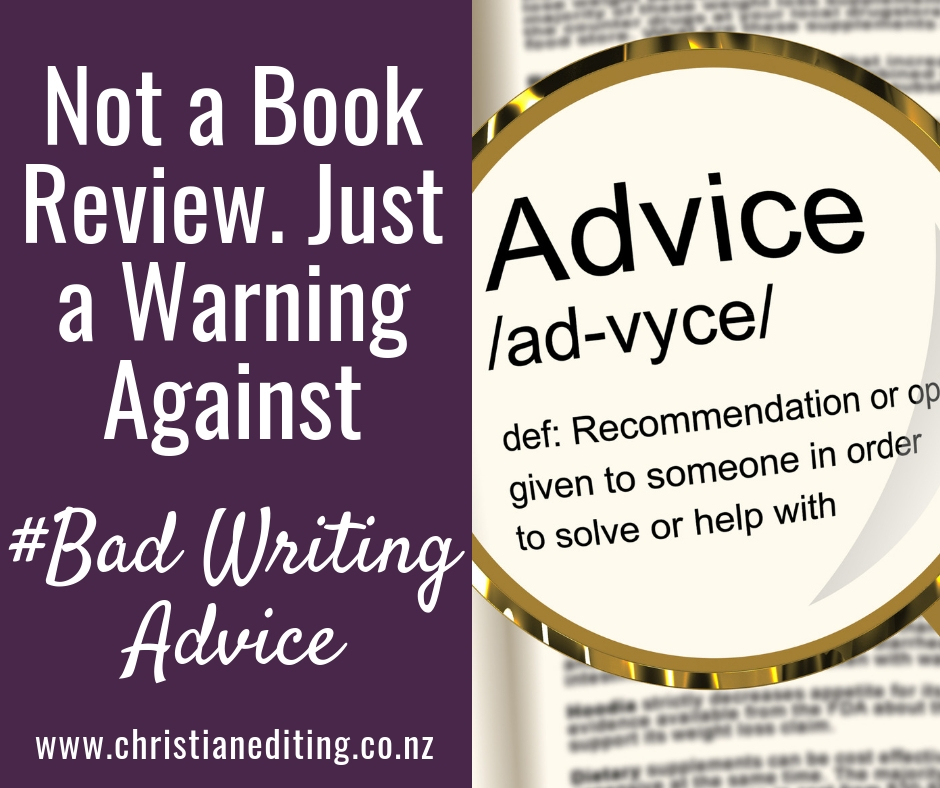As a rule, I don’t think it’s appropriate to review a book based on only reading the Kindle sample.
But I recently found a book that was bad enough that unwary writers need to be warned against it … and I could tell just from the sample. The introduction promises a book in four parts, three of which are #BadWritingAdvice (and I couldn’t judge the fourth).
No, I’m not going to name the book. But I will tell you why it deserves this post.
First, the author offers hundreds of dialogue tags that can be used instead of “said”.
Top tip: use “said”.
Anything other than “said” is telling. If you want to add variety, don’t use a dialogue tag. Use an action beat, body language, or internal monologue. As Browne and King say:
When you’re writing speaker attributions the right verb is nearly always said. Verbs other than said tend to draw attention away from the dialogue.
Then the author offers hundreds (perhaps thousands) of adverbs to use with dialogue.
Apparently, adverbs add spice. That may be true, but spices have to be used carefully and in the right place to be effective: don’t use chilli where the recipe calls for paprika.
Top tip: don’t use adverbs to add spice to your dialogue tags.
Stephen King may or may not be correct, but I think he best expresses the common view:
The road to hell is paved with adverbs.
Next, the author moves onto how to explain feelings, emotions, and internal dialogue.
“Explain” is a synonym for “tell”, and all modern fiction authors know they are supposed to show, not tell. And modern fiction authors also know (or should know) that we do not use tags with internal dialogue.
Actually, there is no such thing as internal dialogue unless your character is telepathic or has a mental illness that means they hear voices (think Gollum and Smeagol). The correct phrase is internal monologue, because there is only one person in an internal conversation.
Top tip: if your dialogue is ambiguous, write better dialogue.
Browne and King have a view on this as well:
If you tell your readers she is astonished when her dialogue doesn’t show astonishment, then you’ve created an uncomfortable tension between your dialogue and your explanation … your readers will be aware, if only subconsciously, that something is wrong
Finally, the author moves onto body language and movement.
She didn’t give enough information in the sample to tell whether this information would be useful (i.e. accurate), or whether it’s as ill-advised as the previous three sections. If past performance predicts future behaviour, then I suspect this section is also #BadWritingAdvice.
If you happen to stumble across this book (or a book like it), please don’t buy it or read it or recommend it to your writing friends. Instead, read (or reread) Self-Editing for Fiction Writers by Renni Browne and Dave King, or any one of a number of other writing and editing guides.


